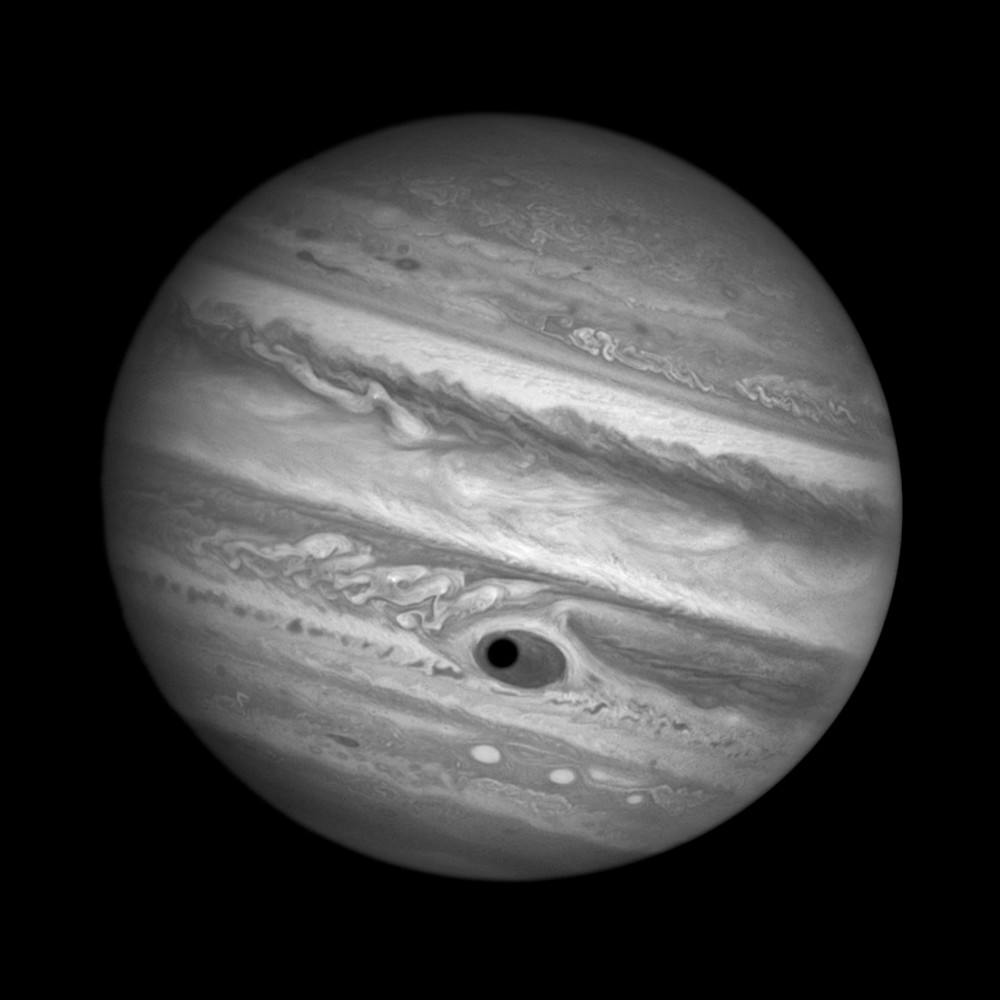By TONY WU Senior Staff Writer
Jupiter, the fifth planet in the solar system, has captivated the interests of scientists across the ages. Categorized as a gas giant, Jupiter is around 90 percent hydrogen and 10 percent helium by volume. Because of their gaseous compositions, gas giants have turbulent atmospheres that can result in large storms.
On Jupiter the most iconic of these storms is the Great Red Spot. Recently, the Hubble Space Telescope has revealed changes in the structure of this large atmospheric storm.
Although the record of the Great Red Spot stretches back for 300 years, there were long periods without any observations. These disappearances can be attributed to the nature of these storms, which can dissipate or fade due to atmospheric conditions.
The current Red Spot is an oval that is spinning counterclockwise with clouds colder than most of Jupiter’s atmosphere. Some of the winds within the storm are blowing at speeds of 540 kilometers per hour. In addition the Great Red Spot can change colors. Scientists have observed changes in colors ranging from pink to white.
The fascination with the storm sparked many theories regarding its formation. Currently the most accepted theory involves the influence of Coriolis forces. The gases near Jupiter’s core are hotter than the gases located above, and as a result the colder gas tends to fall toward the core while the hotter gas rises, forming a convective current. The rotation of the planet and the falling gas create an effect known as the Coriolis force.
Imagine sitting on a spinning carousel without a roof. While the carousel is moving, a leaf falls from the sky. While an outside observer notices that the leaf falls in a straight downward trajectory, the person on the carousel observes the path as being slanted. This difference produces the Coriolis force. In a gaseous atmosphere, the Coriolis force can produce swirling motions and, as a result, storms. It has been hypothesized that this effect allowed the Red Spot to exist for hundreds of years.
However new images have been taken with the Hubble cameras which made it easier to identify atmospheric conditions and phenomena. After analyzing these images, scientists confirmed that the Spot continues to shrink. The shrinking was noted before, when the storm reduced its major axis from 80,000 kilometers to 40,000 kilometers. While the spot has been decreasing in size, the new images depict a slower change.
In addition to a decrease in the size of the Great Red Spot, the Hubble Telescope has highlighted a change in the structure of the center of the storm. The color of this part of the storm changed, and it now contains a filament that can be seen twisting through the storm.
The detailed pictures captured by Hubble also included a rare wave structure that appeared during the Voyager 2 mission. North of the equator, where there are numerous cyclones and anticyclones, a current wave may appear during cyclone formation. This current is called a baroclinic wave, which consists of a stream of gas traveling from the equator to the poles. A well-known example of a baroclinic wave involves the jetstreams that are present in the Earth’s atmosphere.
In addition to analyzing Jupiter’s atmosphere, Hubble is currently studying and working on creating maps of Neptune and Uranus, two other planets that are in the outer region of the solar system.





